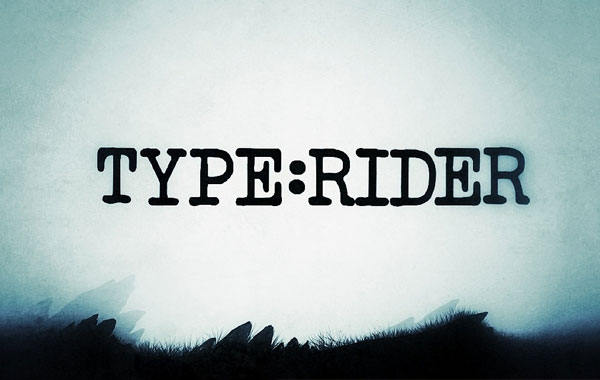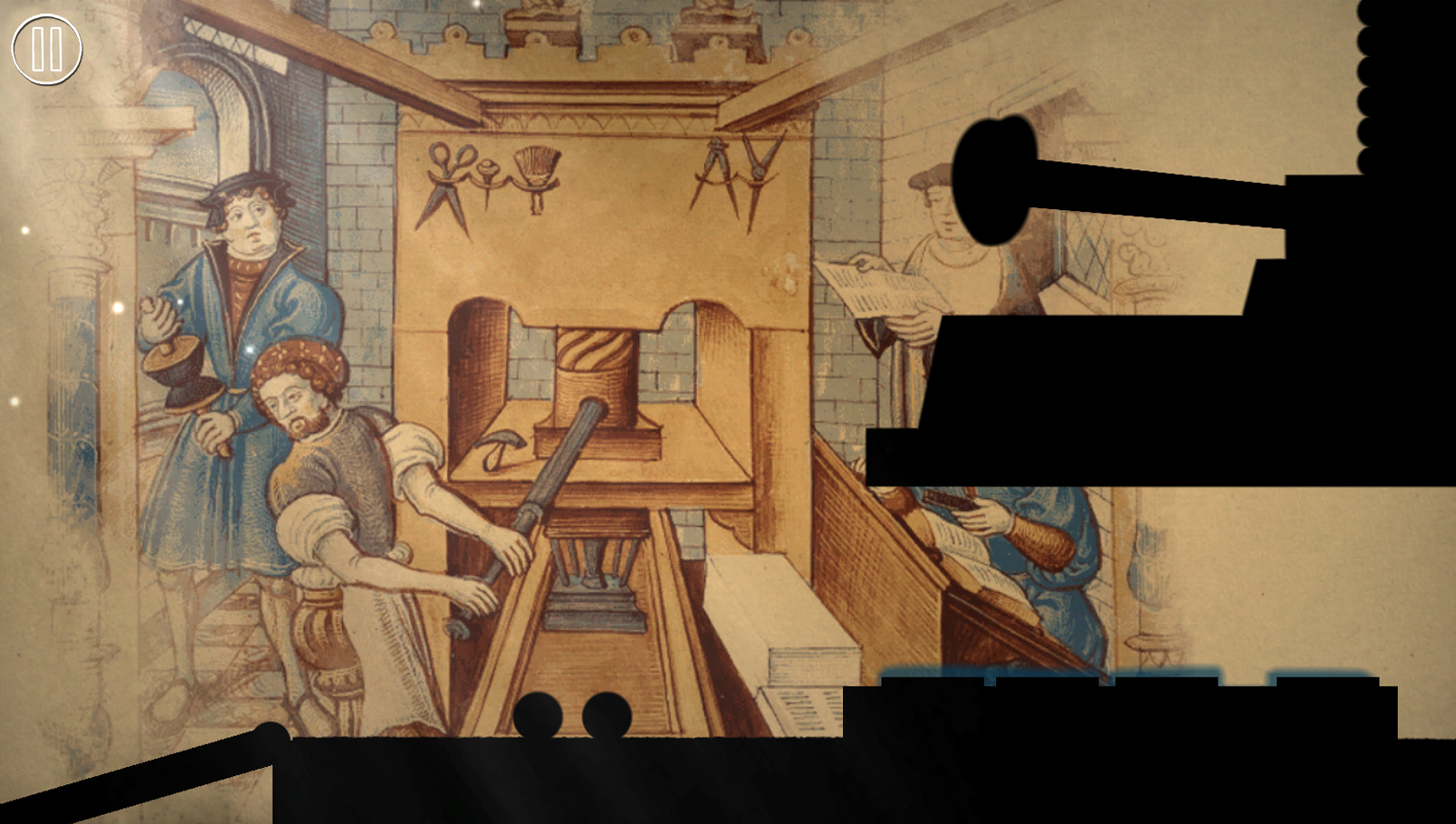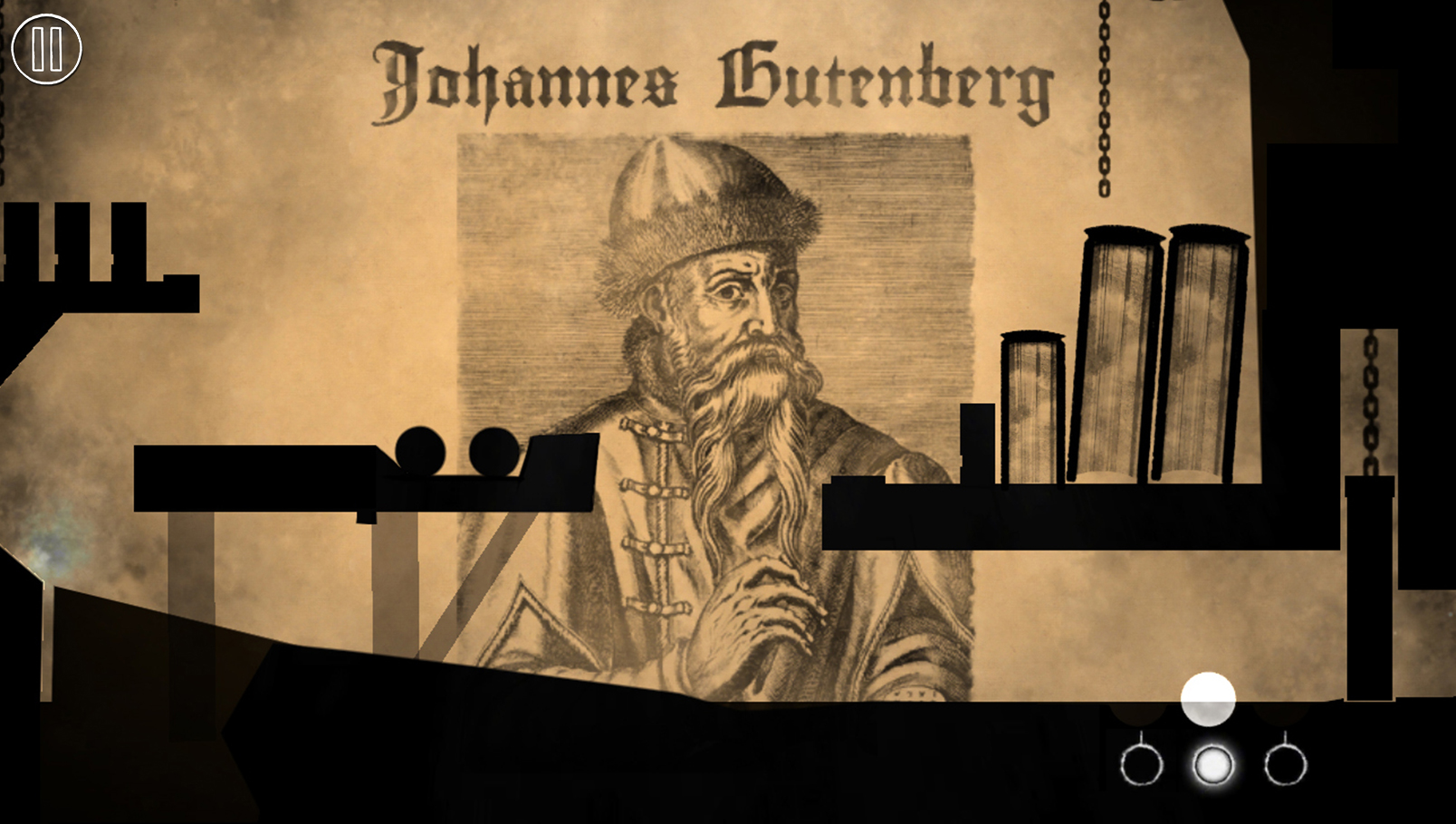Search
[{{{type}}}] {{{reason}}}
{{/data.error.root_cause}}{{{_source.title}}} {{#_source.showPrice}} {{{_source.displayPrice}}} {{/_source.showPrice}}
{{#_source.showLink}} {{/_source.showLink}} {{#_source.showDate}}{{{_source.displayDate}}}
{{/_source.showDate}}{{{_source.description}}}
{{#_source.additionalInfo}}{{#_source.additionalFields}} {{#title}} {{{label}}}: {{{title}}} {{/title}} {{/_source.additionalFields}}
{{/_source.additionalInfo}}- Details
- Category: Computer
- By J. Todd Cumming
- Hits: 5657
Type:Rider (Mac)

Type:Rider – A Typographic Videogame
Developed by: Ex Nihilo
Published by: Bulkypix
Released: November 7, 2013
Available on: Windows, Mac, Linux, Android, iOS, Steam
Number of players: 1 offline
Price: $6.99 (Steam), $1.99 (Google Play), $2.99 (iTunes)
The genre of platformer games tends to be filled with surreal concepts. For example, guiding a hedgehog through an obstacle course to collect golden rings, or helping a pair of plumbers rescue a princess from mutated, cartoonish turtles and evil, sentient mushrooms. However, guiding a pair of dots through the history of the written word is probably one of the oddest examples of platformer that I have ever encountered.
That is the premise behind Type:Rider. The player guides a pair of dots that seem to be joined together by an invisible cord through a variety of settings and levels which closely resemble the time periods and elements of the written language. For example, the first chapter is called “Origins,” and the player has to navigate out of a sequence of caves, with cave paintings in the background. In the “Clarendon” area – a font frequently used in “Wanted” posters of the American “Old West” time – the scenes resemble wood cuts and consist of windmills, mine carts, trains and even a saloon reminiscent of the 1800s. There are a total of ten levels – nine main ones and a hidden level after the game is completed – and each one is based around a different font.
The two dots respond to their environment by rolling as the player uses the arrow keys to navigate, and the space bar to jump. The controls are simple and responsive as the player tries to find all the letters and the ampersand to each of the different fonts featured in the game. Along the way, grabbing all of the asterisks is also a requirement, and each one will unlock a page in a book that details the history of the font and the time period in which it was developed.

Strong Points: Fun platformer; entertaining way to learn history
Weak Points: Short game; not terribly challenging
Moral Warnings: Male nudity; historical descriptions of rebelling against church, culture and government
By wrapping the game in a clever platformer, the developers have created a fun way to teach the user about history. The premise – learning about fonts and the written alphabet – is a rather esoteric subject, but it pulls off surprisingly well. Even those who don't really want to know much about history and avoid reading the history pages will come away with some knowledge as the dots have to navigate through printing presses, linotype machines, and even a brief history of the early days of videogames in order to make it to the end of the game. Some of the levels can be challenging, but not to the frustrating extremes of many games of the platformer genre.
If one of the dots is destroyed or they fall off the screen, the player will be brought back to one of the many save points throughout the levels. There are no lives to lose and no score being kept, so failure to navigate a challenge means simply starting over at a slightly earlier location. This merciful approach makes the game a good one for younger players as well, and the game is more focused on an “edutainment” approach rather than a challenging – sometimes frustrating – platforming experience.
However, the simplicity of the game also means that it can be beaten fairly quickly. Although I haven't achieved 100% completion in the game yet, I'm pretty close, and have only played it for about 4 ½ hours. There are Steam achievements that can encourage some replayability, but other than that, once the game is completed, there isn't much reason to go back. Apparently, there is some sort of tie-in with Facebook, where users can create levels for other players to attempt, but I haven't tried that at this time.

Higher is better
(10/10 is perfect)
Game Score - 90%
Gameplay - 17/20
Graphics - 9/10
Sound - 10/10
Stability - 4/5
Controls - 5/5
Morality Score - 87%
Violence - 10/10
Language - 10/10
Sexual Content - 5/10
Occult/Supernatural - 10/10
Cultural/Moral/Ethical - 8.5/10
The graphics are nice and crisp, and the music and sound effects are reminiscent of the different historical periods as well. The game is a joy to watch (my kids really enjoyed it) and to listen to. There are a few minor glitches that came up while I played – for example, opening the history books at the same time your dots fall to their doom led to a black screen that remained unresponsive until I hit the “ESC” key – but the game never crashed on me.
From a moral perspective the game is pretty solid. During one font – Garamond – one of the images is similar to a Leonardo Da Vinci sketch which features a nude male. While it isn't in specific detail (and actually isn't even as detailed as Da Vinci's drawings), it does merit a mention simply because one wouldn't expect nudity in an “edutainment” game. Some of the historic passages also discuss rebellion against the church and government authorities, but it isn't presented in a biased fashion, simply reporting the history as it happened (it also went into detail about how the church influenced the development of the written language, especially given the influence of the Gutenberg printing press in the history of the Gothic font).
All in all, the game is fun to play, and an entertaining way to learn history. While certainly not the best platformer that I've ever played – and certainly not the longest – it is a worthwhile diversion and a great addition to the game library.






